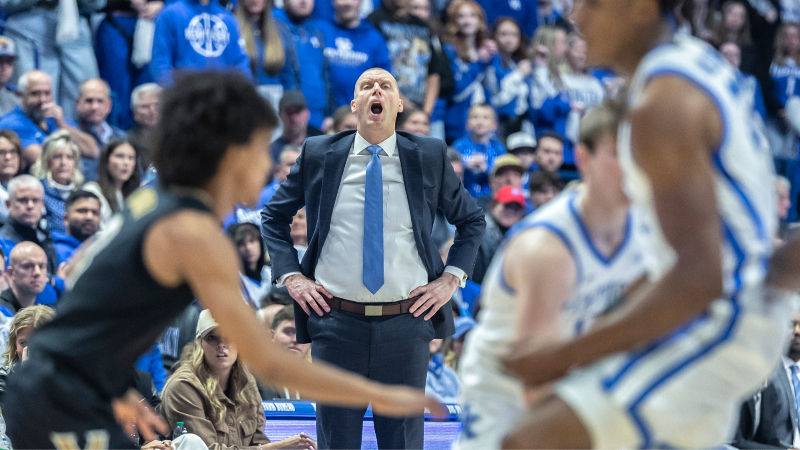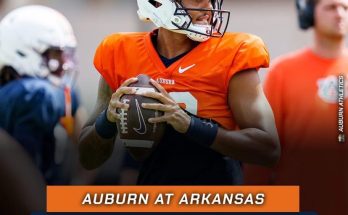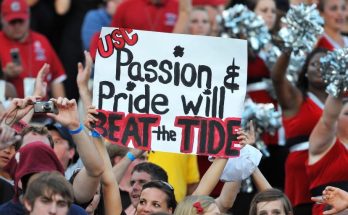The 2024-2025 season for the Kentucky Wildcats men’s basketball team has been a tumultuous journey, marred by a series of injuries that have significantly impacted their performance and cohesion. While injuries are an inherent aspect of sports, the most frustrating element of Kentucky’s current predicament is the relentless and overlapping nature of these setbacks, which have deprived the team of stability and the opportunity to develop consistent on-court chemistry.
A Cascade of Injuries
The Wildcats’ challenges began early in the season with the loss of point guard Kerr Kriisa. On December 7, Kriisa sustained a foot injury that required surgery, sidelining him indefinitely. Despite an initial recovery timeline of 3-to-6 weeks, his absence has extended well beyond this period, leading to considerations of a medical redshirt for the season. Head coach Mark Pope expressed hope for Kriisa’s return but acknowledged the possibility of him sitting out to preserve eligibility for the next season.
The backcourt woes were compounded with injuries to starting guards Lamont Butler and Jaxson Robinson. Butler, a pivotal player averaging 13.2 points and 4.8 assists per game, has been plagued by multiple injuries. He initially suffered an ankle injury in December during a loss to Clemson, which caused him to miss subsequent games. Upon his return, Butler sustained a left shoulder injury in mid-January against Texas A&M, further limiting his participation. As of mid-February, he remained sidelined, with Coach Pope noting the physical toll on Butler and the uncertainty surrounding his return.
Robinson, another key contributor with an average of 13.3 points per game, has also faced his share of setbacks. He played a crucial role in Kentucky’s upset victory over Tennessee on January 28, scoring 17 points and showcasing strong defensive skills. However, injuries have since limited his availability, further straining the team’s guard rotation.
The frontcourt has not been immune to misfortunes either. Forward Andrew Carr has been dealing with a persistent back injury, which has affected his performance and availability. His limited participation has forced the team to rely more heavily on other players, disrupting the established rotation and game plans.
Impact on Team Dynamics
The incessant injuries have led to a lack of continuity in the Wildcats’ lineup, hindering the development of on-court chemistry and a cohesive playing style. Basketball, perhaps more than any other sport, relies heavily on the seamless interaction between players. The constant shuffling of lineups due to injuries prevents the team from establishing the trust and understanding necessary for executing complex plays and defensive schemes.
Moreover, the absence of key players has placed undue pressure on the remaining healthy athletes. Role players are thrust into starting positions, and bench depth is tested as seldom-used players are called upon to fill gaps. While this “next man up” mentality is admirable, it is not a sustainable strategy for long-term success, especially in a highly competitive conference like the SEC.
Coaching Challenges
Head coach Mark Pope faces the arduous task of continually adjusting strategies and rotations to accommodate the ever-changing roster. In a recent discussion, Pope reflected on the challenges posed by the team’s injury situation, emphasizing the need for adaptability and resilience. He acknowledged that the coaching staff must find ways to maximize the potential of available players, even as they await the return of key contributors.
The coaching staff’s efforts to maintain competitiveness are evident in their recent performances. Despite the setbacks, the Wildcats secured an impressive 82-61 victory over Vanderbilt on February 19. Players like Otega Oweh and Amari Williams stepped up, combining for 37 points and demonstrating the team’s depth and resilience.
Looking Ahead
As the season progresses, the uncertainty surrounding player health continues to loom large. The potential return of Kerr Kriisa remains doubtful, with considerations of a medical redshirt on the table. Lamont Butler and Jaxson Robinson’s statuses are also in flux, with their recoveries being closely monitored. The team’s ability to adapt to these challenges will be crucial in determining their success in the upcoming SEC tournament and potential NCAA tournament appearance.
In conclusion, while injuries are an unavoidable aspect of sports, the Kentucky Wildcats’ current situation is particularly exasperating due to the relentless and overlapping nature of these setbacks. The team’s resilience and depth have been commendable, but the lack of stability and continuity poses significant challenges. As they navigate the remainder of the season, the Wildcats will need to rely on strategic coaching adjustments and the unwavering determination of their players to overcome the adversities posed by this injury-plagued season.
The Long-Term Implications for Kentucky Basketball
While the immediate concern for Kentucky is navigating the remainder of the season with a depleted roster, the long-term effects of this injury-riddled campaign cannot be ignored. The Wildcats’ ability to recruit and develop players, as well as their overall program trajectory, could be impacted by how they manage this adversity.
Recruiting and Player Development
Kentucky has long been a powerhouse in college basketball recruiting, consistently bringing in top-tier talent year after year. However, with key players missing extended time due to injuries, it becomes difficult to evaluate the full potential of the team. Incoming recruits might look at the current state of the program and question whether they’ll have the necessary support and stability to develop into NBA-caliber players.
Furthermore, injuries have forced Coach Mark Pope to accelerate the development of younger players and transfers who may not have been expected to play major roles this season. While this has given some players valuable experience, it has also highlighted areas where Kentucky lacks depth. This could prompt the coaching staff to prioritize recruiting players with a proven track record of durability and resilience in addition to pure talent.
Program Identity and Fan Frustration
One of the most frustrating aspects of this injury crisis is how it has affected the overall identity of Kentucky basketball. Historically, the Wildcats are known for their fast-paced, aggressive style of play, with a strong emphasis on transition offense and high-pressure defense. However, with so many key players sidelined, Kentucky has been forced to slow down their game and rely on a more conservative approach.
This shift has not gone unnoticed by fans, many of whom have expressed frustration over the team’s lack of cohesion and energy. The Big Blue Nation is accustomed to watching Kentucky dominate opponents with a deep, athletic roster. Instead, they have had to endure a season filled with inconsistency and uncertainty. While injuries are an unfortunate reality of sports, the seemingly endless wave of setbacks has made it difficult for the Wildcats to establish any real momentum.
Potential Silver Linings
Despite the overwhelming negatives, there are a few potential silver linings to Kentucky’s injury woes.
-
Unexpected Player Growth
The injuries have forced players like Otega Oweh and Amari Williams to take on bigger roles, giving them invaluable experience that could pay dividends in the future. If Kentucky can get healthy in time for the postseason, the team could be more battle-tested and resilient than their competition. -
A Stronger, More United Team Culture
Adversity has a way of bringing teams closer together. The Wildcats have had to rely on their depth and teamwork more than ever, which could create a stronger bond among players. If they can weather the storm and still make a deep tournament run, it could be a defining moment for the program. -
A Chance to Evaluate Coaching Strategies
Coach Mark Pope has had to make constant adjustments this season due to injuries. While this has been a challenge, it also provides an opportunity to assess what strategies work best under difficult circumstances. The ability to adapt and innovate could ultimately make him a stronger coach in the long run.
Final Thoughts
The most annoying aspect of Kentucky basketball’s injury situation is not just the bad luck itself, but the relentless, compounding nature of these setbacks. Injuries have robbed the Wildcats of consistency, forced them to adapt on the fly, and left fans feeling frustrated about what could have been a championship-contending season.
However, all is not lost. The resilience Kentucky has shown through these challenges could serve as a foundation for future success. If they can get key players back in time for the SEC and NCAA tournaments, they could still make a serious run. In the meantime, the Wildcats will need to continue grinding through this difficult stretch, hoping that better days are ahead.
For now, Kentucky fans are left with one question: When will the injury curse finally end?



